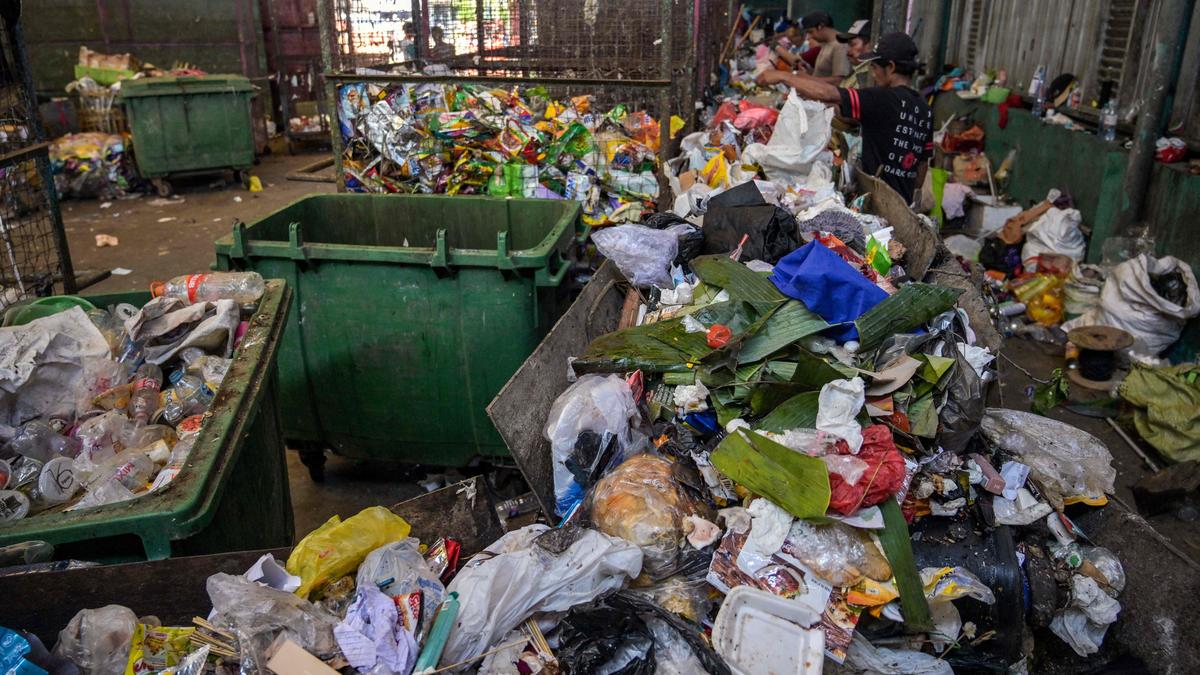
Endocrine disruptors found in plastic waste pose a serious public health challenge in India and globally. These chemicals interfere with hormonal systems, potentially causing developmental, reproductive, neurological, and immune disorders. With plastic pollution rising, their impact on human health, especially in vulnerable populations, is becoming a pressing environmental and medical concern.
The article highlights a critical health hazard emerging from plastic waste and microplastic pollution—specifically focusing on endocrine-disrupting chemicals (EDCs) and their long-term impact on reproductive health, fertility, chronic diseases, and generational wellbeing in India and beyond.
Key Concerns Raised:
Microplastics as Biologically Active Pollutants:
Microplastics (<5mm) have been found in:
Blood (89% of Indian samples)
Lungs, placentas, breast milk, ovarian fluid, and semen
No longer inert: They interact biologically, triggering oxidative stress, apoptosis, and inflammation.
Endocrine Disrupting Chemicals (EDCs) in Plastics:
Examples:
BPA/BPS – food containers, bottles
Phthalates – toys, cosmetics, IV tubes
PFAS – non-stick cookware, food packaging
These mimic/block hormones like estrogen, testosterone, cortisol, leading to:
Infertility, PCOS, early puberty
Sperm damage, menstrual irregularities
Cancers, diabetes, thyroid disorders
Emerging Health Impacts:
Reproductive dysfunction (reduced sperm count, poor egg quality)
Hormonal imbalances (estrogen/testosterone disruption)
Rise in cancers (breast, prostate, uterine)
Neurodevelopmental and metabolic disorders in children
30% drop in sperm count in Indian men in last two decades
India-specific Challenges:
Largest Generator of Plastic Waste:
9.3 million tonnes/year; only partial recycling or incineration.
Toxic gases from burning, unregulated exposure for urban poor, waste pickers.
EDCs in Environment:
Detected in air, food, water in Indian cities (Delhi, Jabalpur, Chennai).
Found in drinking water, exceeding EU safety limits.
Policy Gaps:
Plastic Waste Management Rules (2016, updated 2022, 2024) exist but:
Lack of enforcement
No focus on low-dose or cumulative EDC effects
Do not account for vulnerable populations (pregnant women, children)
Economic & Social Costs:
India’s annual health burden due to EDCs: ₹25,000 crore+
Global estimate (U.S.): $250 billion/year
Disproportionate impact on the marginalised, working near waste sites
Way Forward & Recommendations:
Scientific Measures:
Biomonitoring programmes for blood, urine, breast milk
Longitudinal studies to assess generational health impacts
Public Awareness & Behavioural Change:
Avoid heating food in plastic containers
Promote use of glass, steel, EDC-free alternatives
Encourage antioxidant-rich diets to mitigate oxidative stress
Waste Management Solutions:
Invest in microplastic filtration at water treatment plants
Enforce plastic segregation, safe recycling and disposal
Incentivise biodegradable, non-toxic material innovation
Policy Imperatives:
Update existing rules to include:
EDC-specific regulation
Cumulative exposure assessment
Child and maternal vulnerability provisions
Integrate health and environment governance
Plastic waste is not just polluting our environment—it is infiltrating our biology, distorting our hormones, and undermining human fertility and longevity. For India, which stands at the epicentre of this crisis, the need of the hour is a science-based, multi-sectoral response that prioritises health, sustainability, and intergenerational equity.
UPSC Mains Practice Question
Ques: What are endocrine-disrupting chemicals (EDCs)? Explain their sources, impact on reproductive health, and strategies needed to regulate their presence in consumer products. (250 Words)
12-Jul-2025 05:35 PM
Prime Minister Narendra Modi emphasized the critical role of the...
12-Jul-2025 05:26 PM
Endocrine disruptors found in plastic waste pose a serious public...
12-Jul-2025 04:26 PM
Prime Minister emphasized that BRICS aims to create a balanced,...
12-Jul-2025 04:17 PM
A recent study highlights that the Sinhalese community of Sri...
08-Jul-2025 05:33 PM
A renewed global and national commitment has been made to...
08-Jul-2025 05:21 PM
The Andhra Pradesh government has approved the Amaravati Quantum Valley...
12-Jul-2025 04:17 PM
A recent study highlights that the Sinhalese community of Sri...
12-Jul-2025 04:26 PM
Prime Minister emphasized that BRICS aims to create a balanced,...
12-Jul-2025 05:35 PM
Prime Minister Narendra Modi emphasized the critical role of the...
Leave a Comment